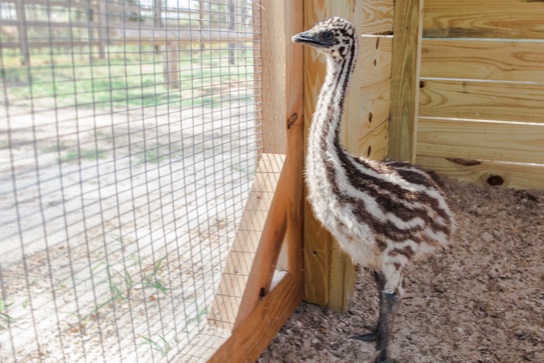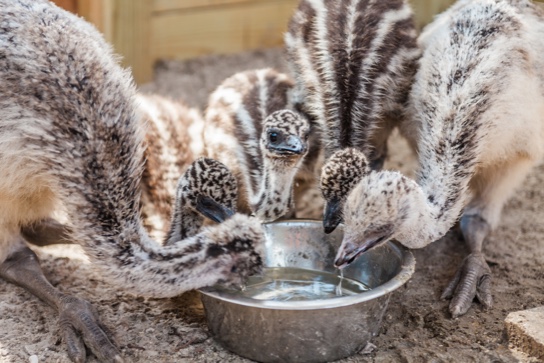A group of emu are referred to as a mob (not a flock). Our mob includes of 1 female blonde emus and 1 male and 3 female brown emus.
Our blonde emu is named Juliet. Juliet has striking blue eyes and is taller than her Romeo.
Two of our brown emus are named: Edward & Edwina, after the picture book series by the same name. We are proud to say that we had the experience of incubating them and watching them hatch, which was a very exciting project for our family.
Emus are very curious birds with a lot of personality. Like most emus our mob love water, playing in the rain, running, are curious when meeting new people, and enjoy having their necks stroked and pecking shiny things.




Emus are originally from Australia and are members of the ratite family of birds, which include: ostrich, cassorary, kiwi and rheas. Ratites have flat breast-bones and no wing muscles so they cannot fly. Emus have strong leg muscles for running and can run short distances up to 40 miles per hour.
Breeding season for emus run from October to April. During this time the female emu will lay 1 egg every 3 to 5 days. While the female is laying the male will cover her eggs with nesting material. When there are at least 9 eggs, the male emu will sit on the nest and raise the young. The male will incubate the eggs for 52-56 days During this time he will not eat or drink. When the eggs hatch the first thing the male emu will do is eat the egg shells. This gives him nutrition but also hides the evidence from predators.
The emu are the second largest living bird by height. Emus grow between 5 ½ and 6 feet tall and weigh 100-120 lbs. Females are taller than males. It is difficult to sex emus and most breeders have DNA tests done to determine the sex. Sometimes vocalizations can give an indication of the sex. The males grunt (like a pig) and the females ‘boom’ (like a kettle drum) using a boom sack located at the base of their neck. All yearlings ‘grunt’. The females will start to change to a boom sometime after they turn 1 year old.